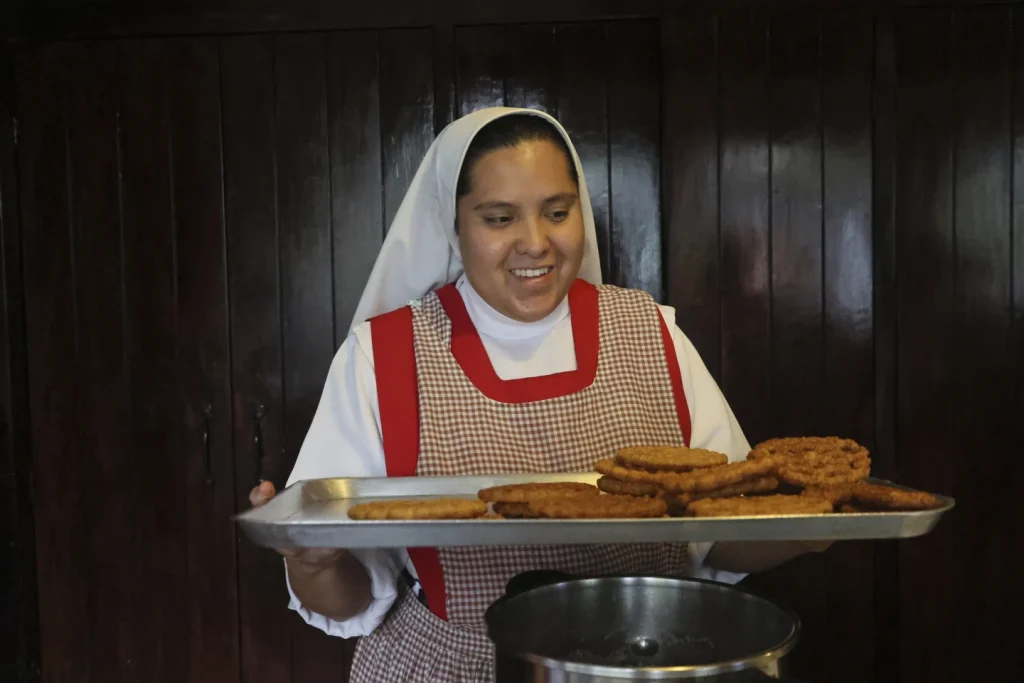The Christmas season is a time of joy and celebration for many people around the world. It is a time when families come together, gifts are exchanged, and delicious food is enjoyed.
However, for Catholic convents and monasteries, this time of year is also a busy period as they prepare traditional delicacies to sell to a loyal fan base.
In a rapidly secularizing world, where the influence of religion is waning, these monastic communities have found a way to sustain themselves by producing cookies, fruitcakes, and even beer for sale.
For many of these communities, especially those devoted to contemplative life and with vows of poverty, this commercial activity is the only means to keep the lights on.
It is a way for them to support themselves and continue their religious practices in a world that is becoming increasingly indifferent to their way of life.
However, the production of these traditional delicacies is not just a matter of survival for these monastic communities.
It is also an enticing way to strengthen their ties with lay people who flock to their doors, and in some cases, their websites, in the holiday season.
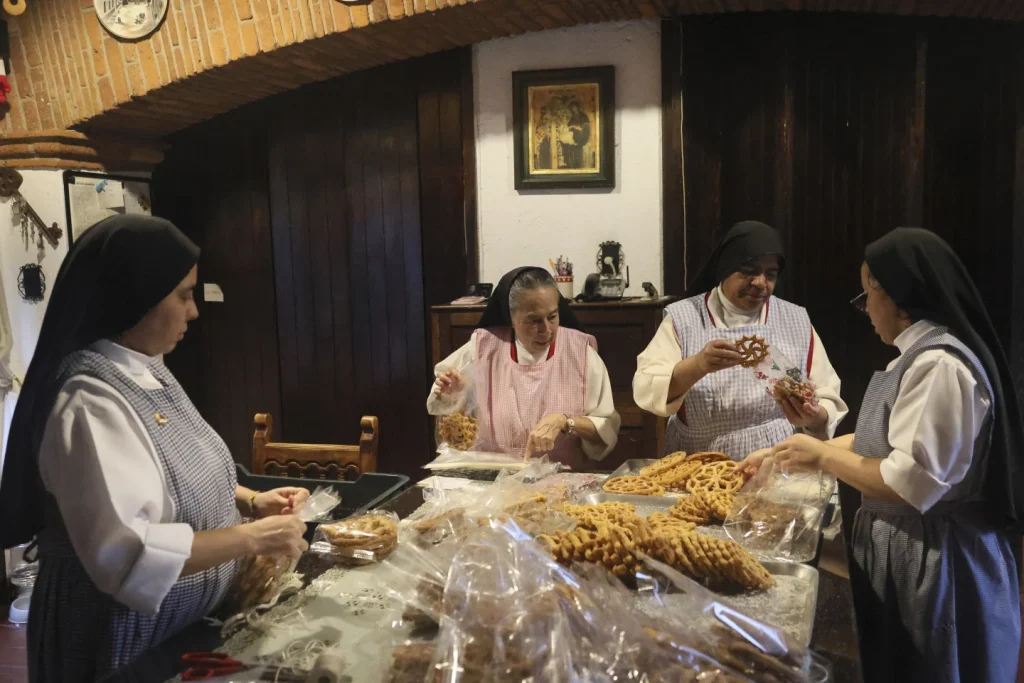
The sale of these products allows the monastic communities to engage with the outside world and build connections with people who may not have had much interaction with them otherwise.
It is a way for them to share their traditions and values with a wider audience and to create a sense of community and belonging.
The products themselves are often made with great care and attention to detail, using traditional recipes and methods that have been passed down through generations.
They are a reflection of the dedication and skill of the monks and nuns who produce them, and they carry with them a sense of history and tradition that is increasingly rare in today’s fast-paced, commercialized world.
For the consumers, these traditional delicacies offer a taste of something special and unique. They are not just buying a product; they are buying into a way of life and a set of values that are embodied in the food and drink that they purchase.
In a world where so much of what we consume is mass-produced and lacking in character, these traditional delicacies offer a welcome change of pace and a connection to something deeper and more meaningful.
In conclusion, the production and sale of traditional Christmas delicacies by Catholic convents and monasteries is not just a commercial activity, but a way for these communities to sustain themselves and strengthen their ties with the outside world.
It is a way for them to share their traditions and values with a wider audience and to create a sense of community and belonging.
And for the consumers, these products offer a taste of something special and unique, a connection to a way of life that is increasingly rare in today’s world.
As we celebrate the holiday season, let us remember the hard work and dedication of these monastic communities, and the special products that they create.
Monasteries, often associated with solitude, prayer, and contemplation, have historically been self-sufficient entities.
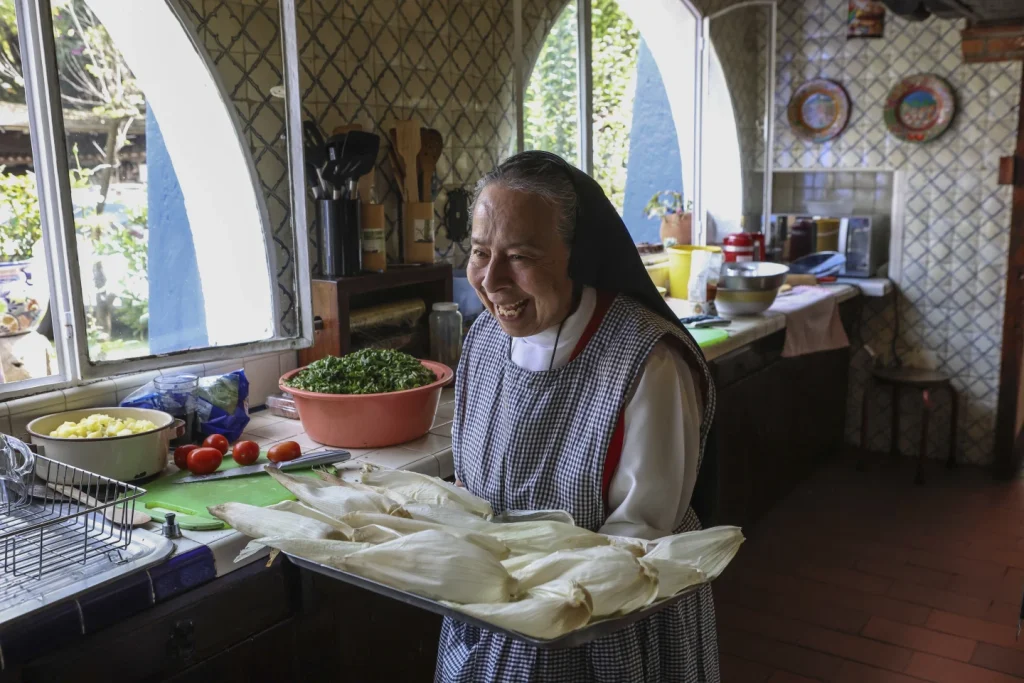
However, as societal and economic landscapes evolve, many monasteries find themselves facing the challenge of maintaining financial independence.
This essay explores the intricate balance between tradition and modernity as monasteries adapt to economic pressures, with a specific focus on the unique case of Spanish monasteries
For centuries, monasteries sustained themselves through small-scale farming, embodying a harmonious relationship with the land.
However, the profitability of this traditional livelihood waned, prompting a shift towards alternative sources of income.
Fermín Labarga, a distinguished professor of church history, underscores the predicament faced by monastic communities in Spain.
Not only do they contend with a diminishing cohort of monks and nuns, but they also bear the responsibility of preserving and maintaining centuries-old architectural marvels.
In response to the changing economic landscape, many monasteries turned to crafts as a means of sustenance. Notably, the production of gourmet foods using homemade ingredients and time-honored recipes emerged as a popular avenue for generating revenue.
Pipa Algarra’s testimony sheds light on the widespread appeal of the nuns’ confectionery, emphasizing the cultural and historical significance of these culinary traditions.
The convergence of tradition and innovation is exemplified by the introduction of Filipino-inspired sushi rolls alongside ancient delicacies such as alfajores, symbolizing the dynamic nature of monastic culinary practices.
Behind the delectable treats that grace the shelves of convent turnstiles lies the labor of dedicated monks and nuns.

Veronicah Nzula, the abbess of a cloistered order in Carmona, shares insights into the daily toil of her community, emphasizing the symbiotic relationship between work and prayer.
Nzula’s narrative underscores the intrinsic value of each sweet produced, as it becomes imbued with the spiritual intentions of the monastic community.
Furthermore, the intergenerational transmission of recipes from older sisters to newcomers like Nzula reflects the continuity of tradition within these sacred spaces.
While the economic activities of monasteries are essential for their sustenance, it is crucial to acknowledge the delicate equilibrium that must be maintained.
The assertion by many monks and nuns that their primary vocation is prayer, not culinary artistry, underscores the complexity of their dual roles.
The pursuit of financial self-sufficiency must be harmonized with the preservation of the spiritual ethos that defines monastic life.
The financial self-sufficiency of monasteries stands as a testament to their adaptability and resilience in the face of economic challenges.
As they navigate the intersection of tradition and modernity, these sacred institutions continue to offer a compelling narrative of perseverance and innovation.
The confluence of prayer, labor, and culinary craftsmanship within the cloistered walls exemplifies the enduring significance of monastic communities in an ever-changing world.
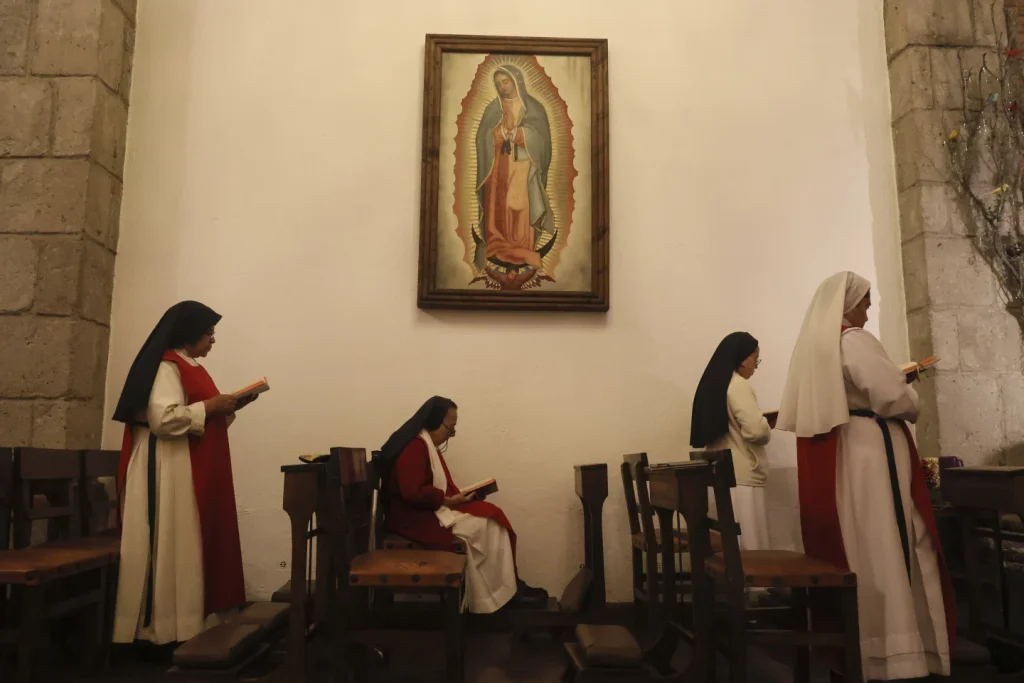
The original text highlights the intersection of faith, tradition, and culinary craftsmanship within various monastic communities, shedding light on the intricate balance between spiritual devotion and practical necessities.
Brother Paul Quenon’s insightful perspective emphasizes the enduring commitment to prayer amidst the bustling activity of the abbey’s bakery.
The sheer volume of production during the holiday season underscores the challenge of maintaining a contemplative atmosphere.
The Benedictine sisters at the Monastery of San Paio de Antealtares exemplify a similar dedication to their spiritual calling, integrating their confectionery work into their morning routine while prioritizing the sanctity of their vocation.
The abbess, Almudena Vilariño, eloquently articulates the intention behind their labor, emphasizing the transformative potential of their sweets as agents of unity and tranquility in the spaces they reach.
The historical continuity of the nuns’ recipe for the tarta de Santiago, dating back to the late 1700s, reflects a profound connection to tradition and community.
The convergence of global pilgrims at the monastery speaks to the enduring allure of these time-honored confections and the spiritual resonance they evoke.
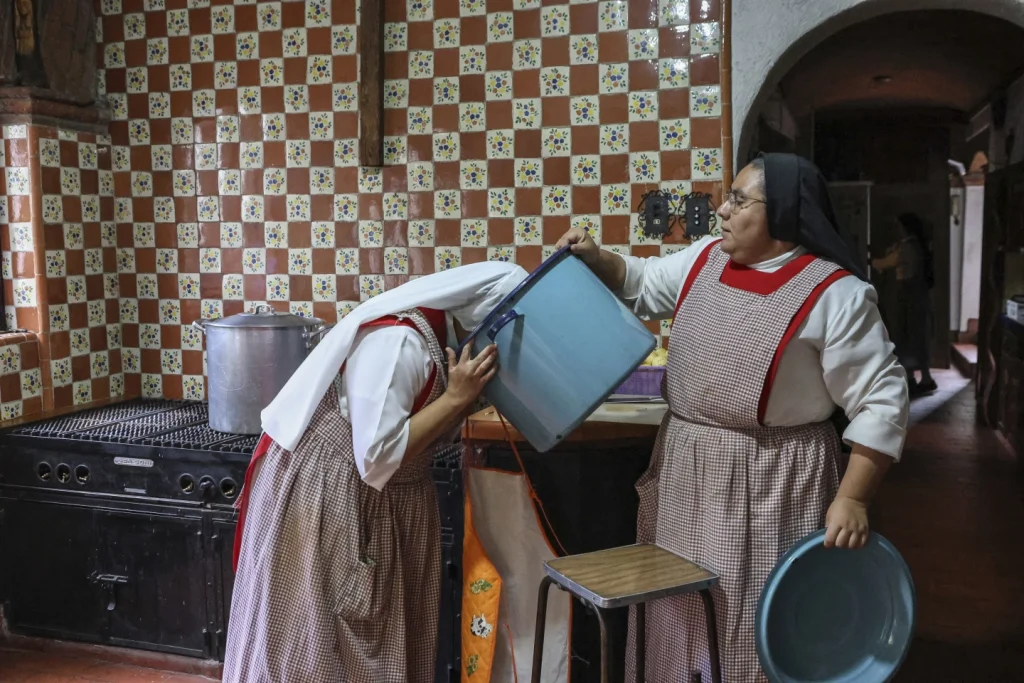
The account of the sisters in Mexico City further underscores the profound intertwining of faith and labor, as they infuse their communal activities with prayerful devotion during the Advent season.
Sister Abigail’s poignant reflection encapsulates the profound purpose behind their work, emphasizing the reciprocal relationship between their provision for others and the support they receive in return.
Overall, this narrative offers a compelling portrayal of the harmonious integration of spiritual devotion, communal labor, and culinary artistry within these monastic communities.
It serves as a testament to the enduring significance of tradition, faith, and the transformative power of their offerings, resonating far beyond the confines of the convent walls.
